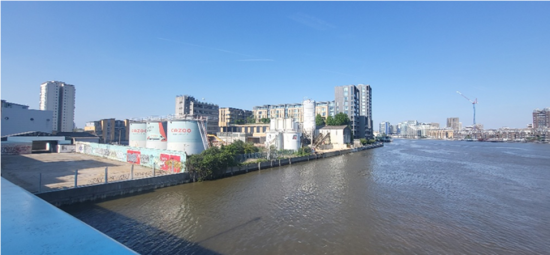Policy CR10
Contaminated land and hazardous substances
Contaminated land
When development is proposed on or near a site that is known to be, or there is good reason to believe may be, contaminated, or where a sensitive use is proposed, an applicant should carry out a site assessment and submit a report of the findings in order to establish the nature and extent of the contamination. Development will not be permitted unless practicable and effective measures are to be taken to treat, contain or control any contamination so as not to:
a) expose the occupiers of the development and neighbouring land uses including, in the case of housing, the users of open spaces and gardens to unacceptable risk.
b) threaten the structural integrity of any building built, or to be built, on or adjoining the site.
c) lead to the contamination of any watercourse, water body or aquifer; and
d) cause the contamination of adjoining land or allow such contamination to continue.
Any application will be assessed in relation to the suitability of the proposed use for the conditions on that site. Any permission for development will require that the measures to assess and abate any risks to human health or the wider environment agreed with the authority must be completed as the first step in the carrying out of the development.
Hazardous substances
The council will ensure the protection of new and existing residents, by rejecting proposals involving provision for hazardous substances that would pose an unacceptable risk to the health and safety of occupants of neighbouring land and rejecting development proposals in the vicinity of existing establishments if there would be an unacceptable risk to future occupants. The council will ensure that development takes account of major hazards identified by the Health and Safety Executive, namely: Swedish Wharf, Townmead Road.
Contaminated land
5.97 In a heavily built-up borough such as Hammersmith and Fulham where there has been a history of heavy industry, land contamination is known to exist. It is important therefore that any land that is known or suspected of being contaminated, or where a sensitive use is proposed, is dealt with before the development takes place.
5.98 Any potential risks associated with contaminated land should be identified and assessed at the planning pre-application stage. Some sites may be contaminated as a result of being in the vicinity of a contaminated site. The risk of this contamination depends on ground conditions and the type of contamination. Where necessary, developers will be required to carry out remediation works and satisfy the council that their development can be safely built and occupied without posing any unacceptable risks to human health or the environment.
5.99 Developers must ensure that their remediation works are sustainable and result from a robust site investigation and risk assessment and that remediation is conducted in-situ, when possible, to reduce the amount of waste produced which requires transport, and recycle soils and aggregates, when possible, to avoid the need for disposal hence minimising the pollution of the wider environment. Any investigation or treatment of the contamination must be agreed with the council before they are implemented.

Hazardous substances
5.100 Within the borough there is one facility (fuel holder and pipelines) which handles and transports hazardous substances. Although the facility is strictly controlled by health and safety regulations, it is necessary to control the type of development around this site and to resist new development which might pose a risk to people occupying sites and buildings in the vicinity. This policy ensures the protection of new and existing residents by resisting the expansion of, or new developments which would cause an unacceptable safety risk. The council will consult the Health and Safety Executive (HSE) on all hazardous substances consent applications. We will also consult the HSE about certain developments (essentially those that will increase the number of people) within the consultation distances around installations, for example, so that risks presented by installations can be given due weight.